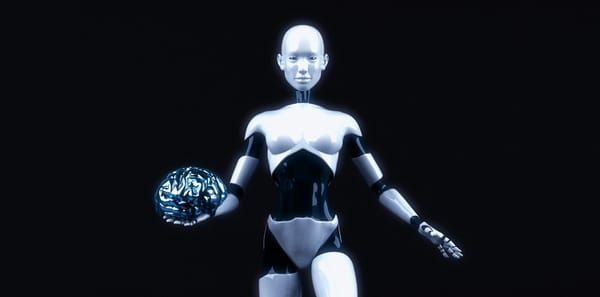How AI Turned Job Descriptions from Snore to Score
Have you ever woken up in the middle of the night, covered in sweat and full with fear? Especially when dreaming about going through dull job descriptions. Terrifying, right? Recruitment nightmares like those are very familiar, and many of us have faced them. The good thing is there is a way to escape this nocturnal nightmare and transform your recruitment process into a smoother, more efficient, and more productive one. So, get ready to be introduced into the new era in recruitment with a tool so powerful that you can’t even dream about it.
Yawn! Why Job Descriptions Used to Be Bad
Job descriptions used to be so dull. Full of bullet points and generic phrases, job descriptions were used to showcase requirements that had nothing to do with the job and in a very boring way.
· One Size Fits None: Traditional job descriptions were trying to reach a wide range of candidates with the hope of attracting some, but they didn’t resonate with anyone. As a result, job descriptions became a snooze-fest filled with genericness.
· Lost in Translation: Some descriptions were written in a very confusing style, leading to candidates not knowing what the job was about.
· Endless Requirements: Endless lists of requirements, asking for candidates that make no sense. How many times have you seen a description asking for a freshly graduated candidate with ten years of experience? Nonsense.
· No Personality: Old-fashioned job descriptions are cold and soulless. None of them are used to capture what the organization is about and its culture.
Thankfully, the recruitment landscape is transforming, and we are stepping away from these awful job descriptions. This era of boring job descriptions is behind us, with tools that help us craft smart job descriptions that are more engaging and relevant to the role.
Coffee Shot: Infusing AI into Recruitment
Just like brewing the perfect cup of coffee needs the right coffee beans and water temperature, job descriptions need the right ingredients to achieve greatness. In the revolutionary world of recruitment, to do such a thing, there is a special ingredient: AI. Here’s how AI changes job descriptions:
· Tailored Job Descriptions: AI crafts tailored job descriptions, similar to the way everyone has their own coffee order. AI makes sure you find a job that feels it’s made for you.
· Efficiency: No need for long candidate searching anymore. AI crafts job descriptions in mere seconds and helps businesses find the perfect candidate for their workforce.
· Unbiased Language: AI has no room for exclusion. Its language model is designed to mitigate biased language and allow businesses to access candidate pools with diverse candidates.
· Fresh Analytics: AI’s data analysis capabilities ensure fresh analytics in your job descriptions. A suitable tool for the ever-evolving market, it’s just like opening a fresh bag of coffee beans.
Implementing AI into your recruitment processes isn’t just speeding up things. The aspects that it provides to it are many more. It enriches and transforms the whole process, leading to a clearer future with more effective hiring.
Setting Up Your Morning Alarm: AI Style
Setting up AI for your recruitment is like setting up your morning alarm. Of course, it is not the same with an alarm clock that you either want to hit snooze multiple times or jump out of bed, but setting both of those up is alike. The difference is that setting up your recruitment strategy is far more intelligent, tailored, and maybe more pleasant. Here’s how this happens with AI:
· Assess Your Needs: Just like you set up your alarm clock to ring at a certain time, you need to identify your needs for your recruitment. You have to understand what you need the AI for before you embrace its powers.
· Research the Market: There are thousands, or even more, companies that sell alarm clocks, but which of them is the best? The same question goes for every product, and finding the best AI-powered tool vendor is no different.
· Find the Most Suitable: After researching the market, evaluate the benefits that each one of them is offering and if they integrate smoothly with your existing systems.
· Educate Your Employees: Most AI tools have a very user-friendly interface and are very easy to use, but employees still may need training. It is very important to teach them how to use the new AI tools and help them understand that they are here to enhance their job, not to replace them.
· Continuous Learning: Have you ever seen those alarm clocks that gradually increase their volume as they keep ringing? AI tools kind of work do the same. They, of course, don’t produce any sounds, but they keep getting better the more they are used.
Stepping up your game with AI needs some time, but the results will set up the foundations for a more promising future. It is quite simple, and you shouldn’t let fear be a factor. Leverage its powers and make your recruitment strategy more efficient and effective.
When AI Doesn’t Ring
What happens when your alarm clock hits snooze “on its own”? Has something like this ever happened to you? Well, sometimes, the same can happen with your smart AI tool. Of course, AI can’t hit any snooze button, but it’s metaphorical for the times that AI misses its mark. Let’s explore these pitfalls:
· Overlooking on Diversity: One of the most talked about arguments of AI in recruitment. As we said before, AI needs training. If trained on biased data, then the results will be like this. It’s important to oversee AI-generated results and make changes if needed.
· False Tunes: There are possibilities that AI sometimes confuses data on its job descriptions and mismatches a role and the skills and qualifications needed. It’s like when you set the alarm clock to AM instead of PM.
· Battery Burnouts: Just as an alarm clock stops working when its battery runs out, AI-generated results may start becoming outdated and inefficient. AI’s data requires maintenance and regular updates to keep providing the best results for an organization’s recruitment processes.
For an AI tool to work perfectly, attention to detail is needed. Human supervision and regular checks are needed to avoid sleeping on the best parts of the recruitment process.
What’s the Flavor of the Future for Jobs and AI
A tasteful cup of coffee needs the right blend of beans to be brewed. The same thing goes for jobs and AI. Looking into the future, there are many fresh blends of opportunities and difficulties for them. So, what will the flavor of the future be? Let’s see:
· Repetitive Tasks: Boring repetitive tasks? No problem. AI’s got your back like a morning coffee. AI can handle all boring, repetitive tasks and free up valuable time for humans. This way, humans can use this free time for strategic initiatives.
· New opportunities: AI isn’t all about automation. We can see new job opportunities being created for administrating AI or for training users in the future.
· Continuous Learning: AI’s progression and evolution is based on continuous learning. Professionals should be “tasting” it regularly to help it improve while they also get better at embracing its capabilities.
As AI keeps growing, it takes up a leading role in the future. It helps businesses step up their recruitment game and also automate their processes. No one can surely know how the future will be shaped, but we expect AI to play a vital role. So, grab yourself a cup of the future blend because it’s a coffee sip worth waking up early in the morning!




